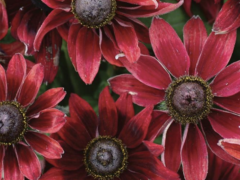
‘Cherry Brandy’ black-eyed Susan, gloriosa daisy
Rudbeckia hirta 'Cherry Brandy'
‘Cherry Brandy’ is a selection of black-eyed Susan that features 3-4″ diameter blooms with red … Continued
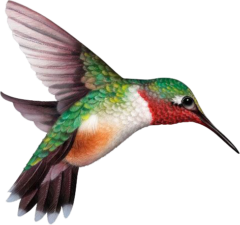 Hummingbirds, bees and butterflies are well-known pollinators, but there are thousands of unsung pollinator heroes, including moths, wasps, flies, and beetles, many mammals, birds, and reptiles, who also take on the job.
Hummingbirds, bees and butterflies are well-known pollinators, but there are thousands of unsung pollinator heroes, including moths, wasps, flies, and beetles, many mammals, birds, and reptiles, who also take on the job.
Pollinators move from plant to plant, fueling up with pollen and nectar from blooming trees, shrubs, perennials, annuals, vegetable plants, and herbs. As they move, the pollinators transport and deposit pollen, fertilizing plants and allowing them to reproduce.
Pollinator plants can be native and non-native, but not all flowering plants are equal when it comes to providing the highest quality protein-rich pollen. Many hybrids don’t even produce pollen at all. The following list includes pollen-rich plants to include in your garden to provide pollinators with food.
Local butterfly expert Lenora Larson has created these informational handouts. You can download them here!
• Butterflies: Flying Flowers in your Garden!
• A Vital Connection: Native Plants and Butterflies
• Long Lips Farm Caterpillar Foodplants
• Butterfly Bartending: Nectar Flowers
• Long Lips Farm: Selected Butterfly Nectar Flowers
• Bee Friendly: Plants for Bees and Other Pollinators
Since 1970 the population of North American birds has dropped nearly 30% — almost three billion birds have vanished from our forests, grasslands, and backyards in less than a human lifetime. It’s a chilling fact that makes it clear that we must act as individuals to help ensure their survival.
Most importantly, ninety-six percent of all terrestrial bird species rear their young on insects so it is also important to grow plants that feed insects to provide a well-rounded habitat in your garden.
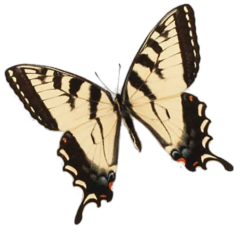

Rudbeckia hirta 'Cherry Brandy'
‘Cherry Brandy’ is a selection of black-eyed Susan that features 3-4″ diameter blooms with red … Continued
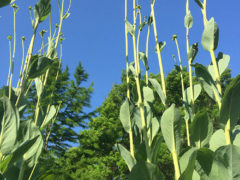
Rudbeckia maxima
This incredible wildflower grows 5-7′ tall with glaucous leaves to 10″. Flowers have 4-6″ cones … Continued
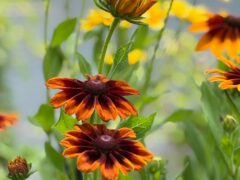
Rudbeckia hirta 'Cappucino'
Huge 4″ blooms are beautiful bronzy red-orange bicolor with dark centers. Great cut flowers, this … Continued
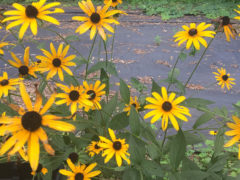
Rudbeckia fulgida
This adaptable native occurs in both dry and moist soils in open woods, glades and … Continued
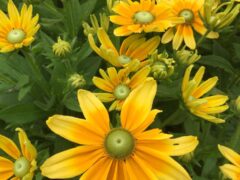
Rudbeckia hirta 'Prairie Sun'
An All-American Selections Award Winner 2003 Huge daisy-like blooms have peachy orange petals that wash … Continued
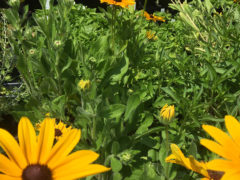
Rudbeckia subtomentosa
Gray-green foliage is covered by masses of yellow daisy-like flowers about 3” across with dark … Continued
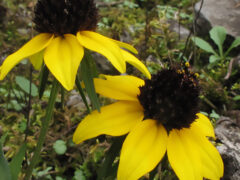
Rudbeckia triloba
Native to the United States, this yellow flowering perennial is often seen in old fields … Continued
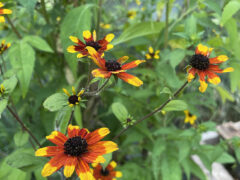
Rudbeckia triloba 'Prairie Glow'
A butterfly magnet, this compact, well-branched, and floriferous Rudbeckia produces gold-tipped blooms with bronzy orange … Continued
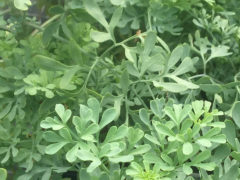
Ruta graveolens
Lacy blue-green ornamental herb is known as the “herb of grace.” Rue was once thought … Continued
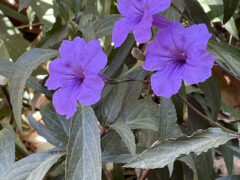
Ruellia simplex 'Purple Showers'
Mexican petunias are happiest when grown in medium to wet soils in full sun to … Continued
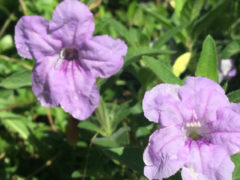
Ruellia humilis
Tubular, bell-shaped, petunia-like flowers up to 3″ long open from May to October on drought-loving … Continued
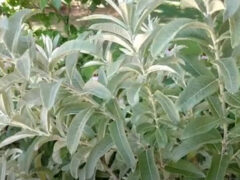
Salix candida 'Jefberg'
Iceberg Alley™ is a native plant discovered by the Memorial University of Newfoundland and Labrador … Continued